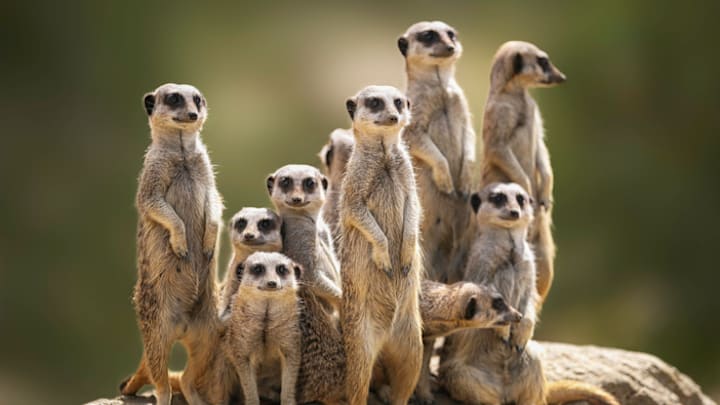In the animal kingdom, the order Carnivora has two suborders. Caniformia, which means “dog-like,” includes dogs, of course, but also bears, skunks, raccoons, seals, and walruses. Feliformia, meaning “cat-like,” includes cats in the family Felidae as well as non-cats in other families. Here are a few you may not be familiar with.
1. Fossa
The fossa (Cryptoprocta ferox) is the largest carnivore in Madagascar, where they eat lemurs and other small animals. As a female fossa matures, she goes through a stage of “masculinization,” in which her genitals elongate and resemble a spiny penis. Fossas are considered a vulnerable species and are protected in reserves, but are still hunted and eaten in some communities. Because they are widespread and claim a large individual territory, it is hard to get meaningful numbers on their population. Some consider them vermin due to their tendency to prey on chickens and small livestock.
2. Falanouc

The falanouc (Eupleres goudotii) also lives in Madagascar and belongs to the same family as the fossa, but resembles a mongoose more than its cousin. Its teeth are different from most of its taxonomically close relatives because the falanouc eats mainly insects and earthworms.
3. African Civet
There are more than a dozen species of civet in Africa and Asia belonging to several genera. What they have in common is their anal musk glands, which they use to mark territory and attract mates. Civets look like cats with the elongated bodies of otters or weasels. The African civet (Civettictis civetta) is the most common species and the one from which chemists traditionally obtain musk for use in perfumes—though synthetic Civetone is used more frequently today. African civets are found in the savannah, forests, and rainforests of Africa. They have masked face markings like a raccoon.
4. Mongoose
The name mongoose refers to 29 species in the family Herpestidae, which live in southern Europe, southern Asia, and in Africa. They are famous for their ability to fight snakes. The mongoose has receptors for acetylcholine that reject the neurotoxins in snake venom, much like snakes themselves have. Therefore, they are immune to snake venom. Another distinctive trait is the mongoose’s horizontal pupils, which give them a wider field of vision in front and behind them. This pupil shape occurs more frequently among grazing animals.
5. Linsang
There are four species of linsang: two in Africa, and two in Asia. The Asiatic linsang (genus Prionodon) comes in two flavors: banded (P. linsang) or spotted (P. pardicolor). That describes their body markings; both have long striped tails. The banded linsang resembles a weasel or ferret, with a longer tail and more catlike teeth, and lives in the rainforest canopies of Southeast Asia.
6. Binturong
The binturong (Arctictis binturong), also called the bearcat, is found in Southeast Asia. It looks and moves like a small round bear, and is a distant relative to genets, palm civets, and linsangs. Despite belonging to the order Carnivora, the binturong eats mostly fruit. They will also eat meat, eggs, fish, and insects when the opportunity arises. Binturongs spend most of their time in trees, which is made easier by their ankles, which can turn 180 degrees, and their prehensile tails, which can grip like a fifth limb.
7. European Genet

The European genet (Genetta genetta) is often mistaken for a cat, although it is more closely related to the mongoose. A couple dozen species range throughout Africa and Europe. In 2014, a camera trap caught a genet hitching a ride on a buffalo and a rhinoceros in South Africa. It was determined that it was the same genet, and it had made a habit of riding other animals on different occasions.
8. Meerkat
We all know meerkats (Suricata suricatta) for their charming habit of scanning the horizon for danger as if they were posing for the camera, and because of a Disney character named Timon. Meerkats are mongooses in the family Herpestidae. What sets them apart is their tendency to live in clans of 20 to 50 animals, and that habit of standing on their back feet in order to see across the African plains. Meerkats are social and loyal to the group, often babysitting and even nursing each other’s young.
A version of this story was published in 2014; it has been updated for 2024.
